Some people get Medicare Part A (Hospital Insurance) and Medicare Part B (Medical Insurance) automatically and other people have to sign up for it. In most cases, it depends on whether you’re getting Social Security benefits.
The following scenarios will help explain when and how you’ll obtain Part A & B:
I’ll be getting benefits from Social Security or the Railroad Retirement Board (RRB) at least 4 months before I turn 65.
Do I need to sign up?
No. In most cases, you’ll automatically get Part A and Part B starting the first day of the month you turn 65. If your birthday is on the first day of the month, Part A and Part B will start the first day of the prior month. If you live in Puerto Rico, you automatically get Part A. If you want Part B, you need to sign up for it. Complete an Application for Enrollment in Part B (CMS-40B) to sign up for Part B, which can be found here.
Should I get Part B?
Most people should enroll in Part A when they turn 65, but certain people may choose to delay Part B. Find out more about whether you should take Part B.
How do I sign up?
You don’t need to sign up if you automatically get Part A and Part B. You’ll get your red, white, and blue Medicare card in the mail 3 months before your 65th birthday.
When do I sign up?
You don’t need to sign up since you automatically get Part A and Part B.
Can I get a health or drug plan?
When you decide how to get your Medicare coverage, you might choose a Medicare Advantage Plan (Part C) and/or Medicare prescription drug coverage (Part D). There are specific times when you can sign up for these plans, or make changes to coverage you already have.
I won’t be getting benefits from Social Security or the Railroad Retirement Board (RRB) at least 4 months before I turn 65.
Do I need to sign up?
If you aren’t getting benefits from Social Security (or the RRB) at least 4 months before you turn 65, you’ll need to sign up with Social Security to get Part A and Part B.
Should I get Part B?
Most people should enroll in Part A when they turn 65, but certain people may choose to delay Part B. If you don’t qualify for premium-free Part A, you must sign up for Part B in order to buy Part A.
How do I sign up?
- Apply online at https://www.ssa.gov/benefits/forms/. If you started your online application and have your re-entry number, you can go back to Social Security to finish your application.
- Visit your local Social Security office.
- Call Social Security at 1-800-772-1213.
- If you worked for a railroad, call the RRB at 1-877-772-5772.
- If you already have Part A and want to sign up for Part B, complete an Application for Enrollment in Part B (CMS-40B). Get this form and instructions in Spanish here.
When do I sign up?
When you’re first eligible for Medicare, you have a 7-month Initial Enrollment Period to sign up for Part A and/or Part B.
If you’re eligible for Medicare when you turn 65, you can sign up during the 7-month period that:
- Begins 3 months before the month you turn 65
- Includes the month you turn 65
- Ends 3 months after the month you turn 65
If you didn’t get automatically enrolled in premium-free Part A (for example, because you’re still working and not yet getting Social Security or Railroad Retirement Board (RRB) benefits), you can sign up for premium-free Part A (if you’re eligible) any time during or after your Initial Enrollment Period begins. If you’re eligible for premium-free Part A, you can enroll in Part A anytime after you’re first eligible for Medicare. Your Part A coverage will go back (retroactively) 6 months from when you sign up, but no earlier than the first month you’re eligible for Medicare. Your coverage start date will depend on when you sign up. If you have to buy Part A and/or Part B, you can only sign up during a valid enrollment period. You can only sign up for Part B during the periods listed below.
In most cases, if you don’t sign up for Medicare Part B when you’re first eligible, you’ll have to pay a late enrollment penalty. You’ll have to pay this penalty for as long as you have Part B and could have a gap in your health coverage.
You can sign up for Part A and/or Part B during the General Enrollment Period between January 1–March 31 each year if both of these apply:
- You didn’t sign up when you were first eligible.
- You aren’t eligible for a Special Enrollment Period (see below).
You must pay premiums for Part A and/or Part B. Your coverage will start July 1. You may have to pay a higher premium for late enrollment in Part A and/or a higher premium for late enrollment in Part B.
To sign up for Part B, complete an Application for Enrollment in Part B (CMS-40B). If you don’t have Medicare or you want to sign up for Part A (some people have to pay a premium for Part A), contact Social Security.
Special circumstances (Special Enrollment Periods)
Once your Initial Enrollment Period ends, you may have the chance to sign up for Medicare during a Special Enrollment Period (SEP). If you’re covered under a group health plan based on current employment, you have a SEP to sign up for Part A and/or Part B anytime as long as:
You or your spouse (or family member if you’re disabled) is working
You’re covered by a group health plan through the employer or union based on that work.
You also have an 8-month SEP to sign up for Part A and/or Part B that starts at one of these times (whichever happens first):
The month after the employment ends
The month after group health plan insurance based on current employment ends
Usually, you don’t pay a late enrollment penalty if you sign up during a SEP.
You may also qualify for a Special Enrollment Period for Part A and Part B if you’re a volunteer, serving in a foreign country.
COBRA and retiree health plans aren’t considered coverage based on current employment. You’re not eligible for a Special Enrollment Period when that coverage ends. This Special Enrollment Period also doesn’t apply to people who are eligible for Medicare based on having End-Stage Renal Disease (ESRD).
If you have a Health Savings Account (HSA) with a High Deductible Health Plan (HDHP) based on your or your spouse’s current employment, you may be eligible for an SEP. To avoid a tax penalty, you should stop contributing to your HSA at least 6 months before you apply for Medicare. Remember, premium-free Part A coverage begins 6 months before the month you apply for Medicare (or Social Security/RRB benefits), but no earlier than the month you turn 65. You can withdraw money from your HSA after you enroll in Medicare to help pay for medical expenses (like deductibles, premiums, coinsurance or copayments). If you’d like to continue to get health benefits through an HSA-like benefit structure after you enroll in Medicare, a Medicare Advantage Medical Savings Account (MSA) Plan might be an option.
I’m under 65 and have a disability.
Do I need to sign up?
You automatically get Part A and Part B after you get one of these:
- Disability benefits from Social Security for 24 months
- Certain disability benefits from the RRB for 24 months
Should I get Part B?
Certain people may choose to delay Part B. Find out more about whether you should take Part B.
How do I sign up?
You don’t need to sign up if you automatically get Part A and Part B. You’ll get your red, white, and blue Medicare card in the mail 3 months before your 25th month of disability.
Can I get a health or drug plan?
When you decide how to get your Medicare coverage, you might choose:
- A Medicare Advantage Plan (Part C)
- Medicare prescription drug coverage (Part D)




